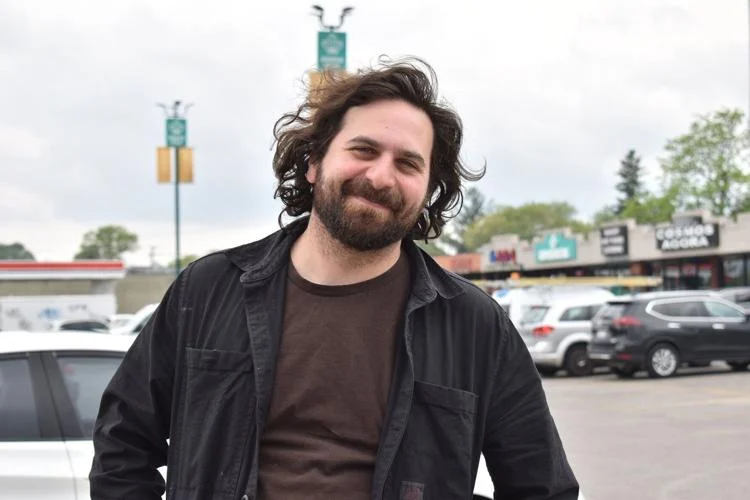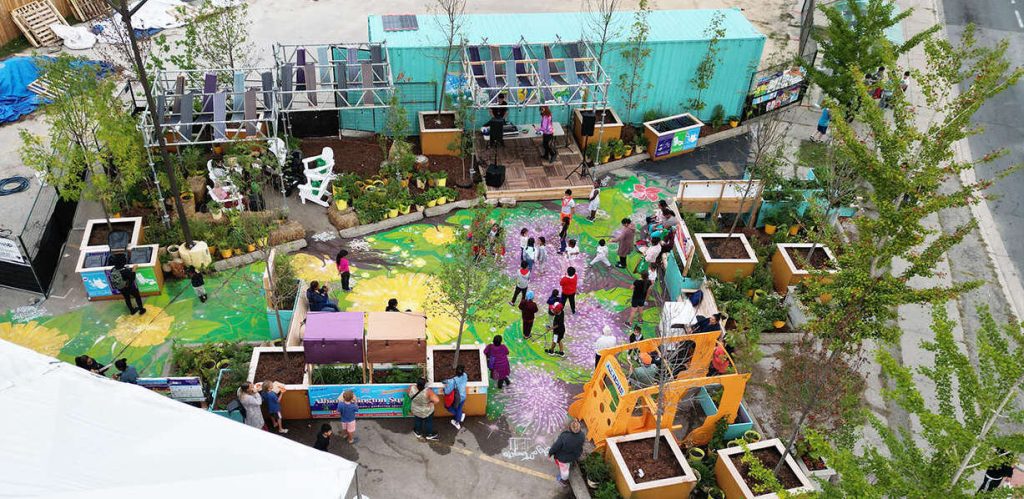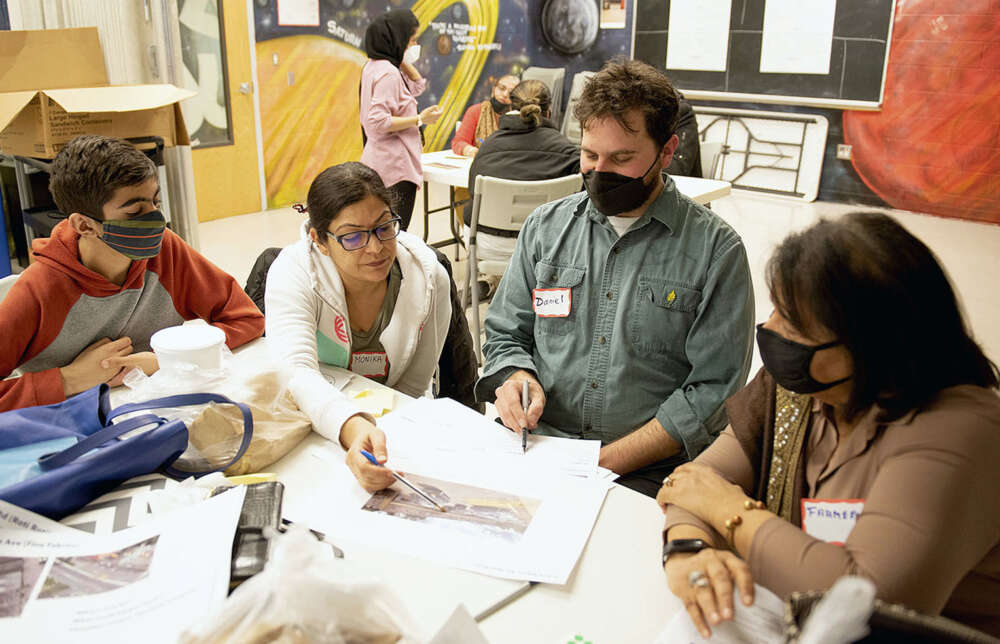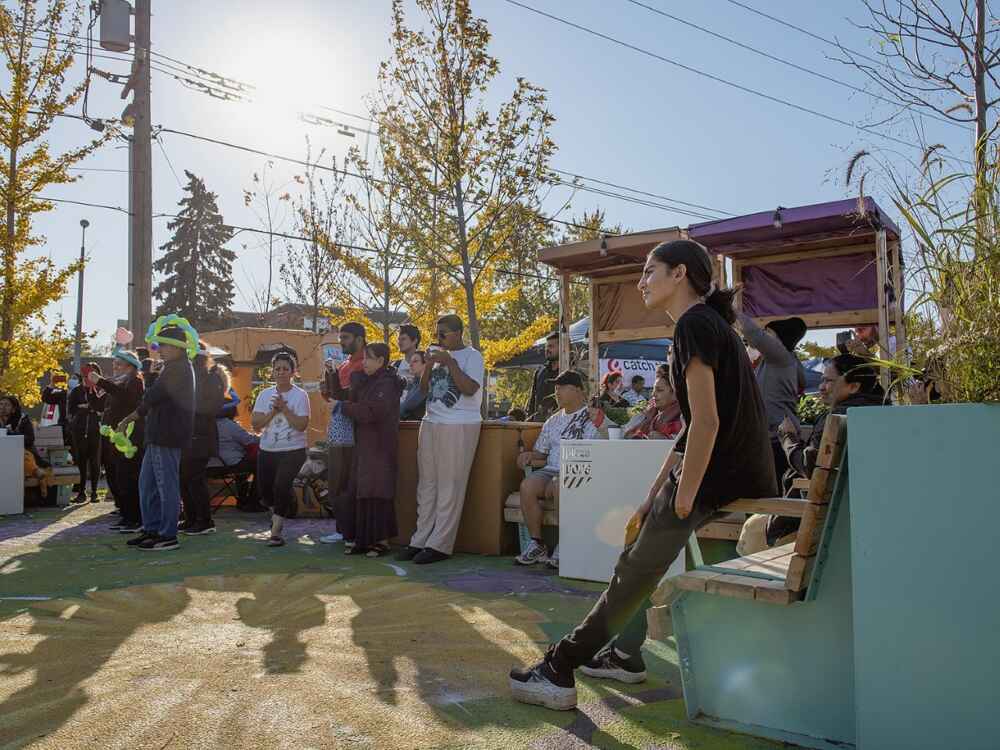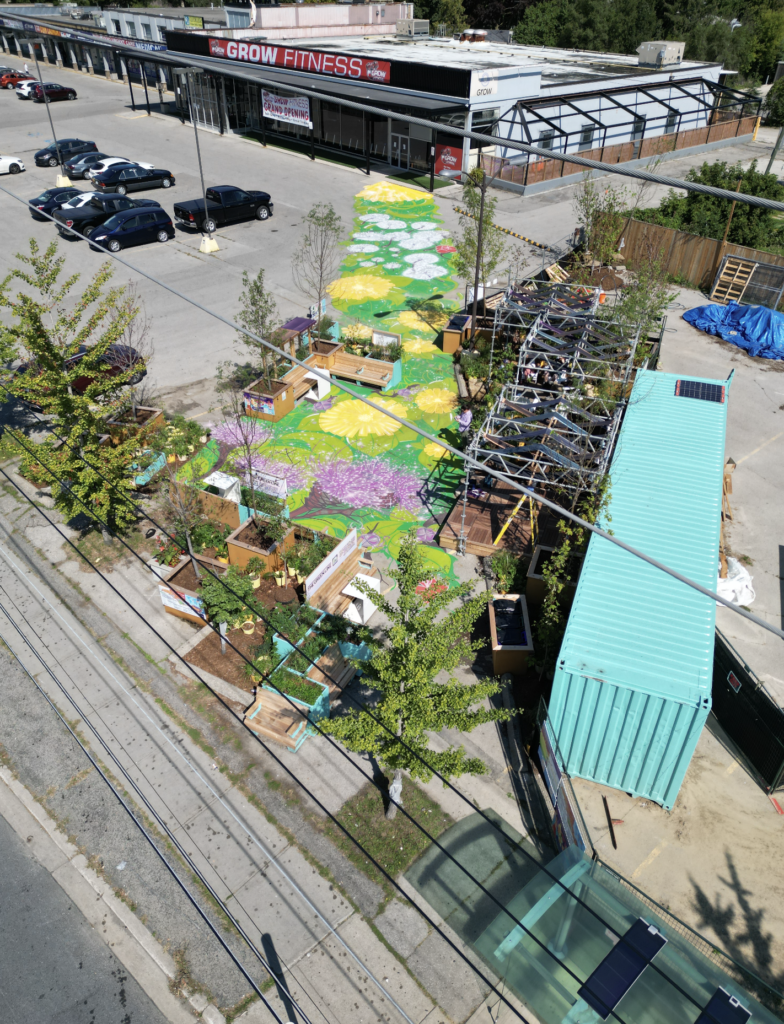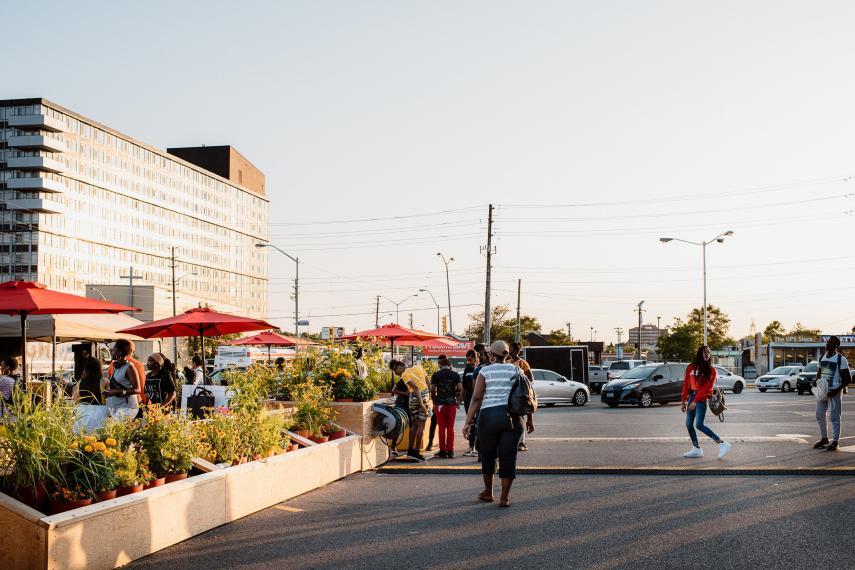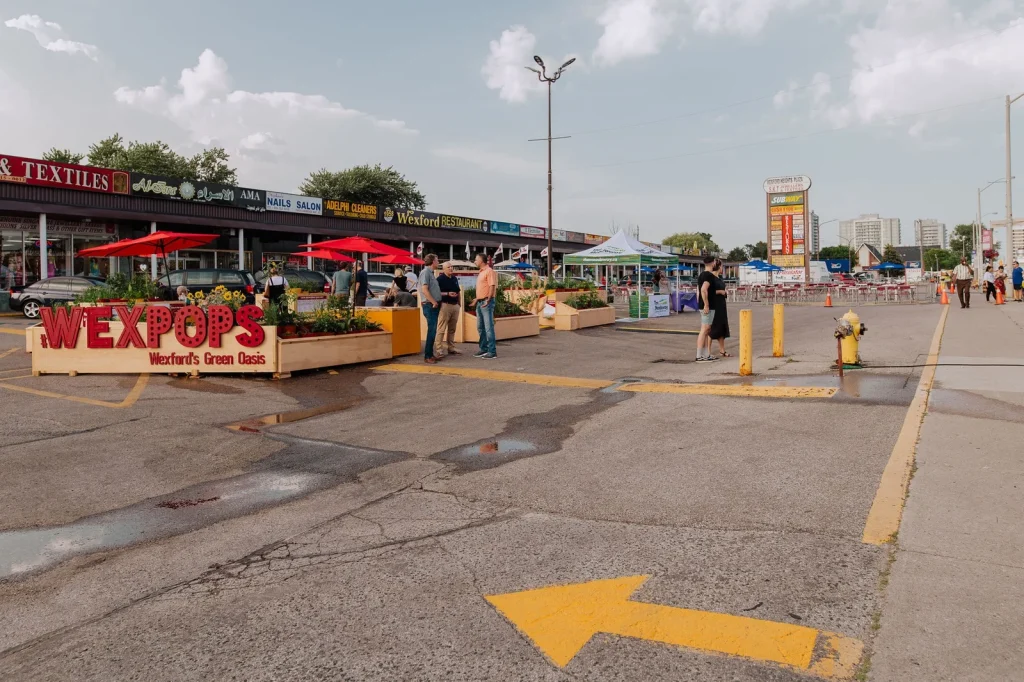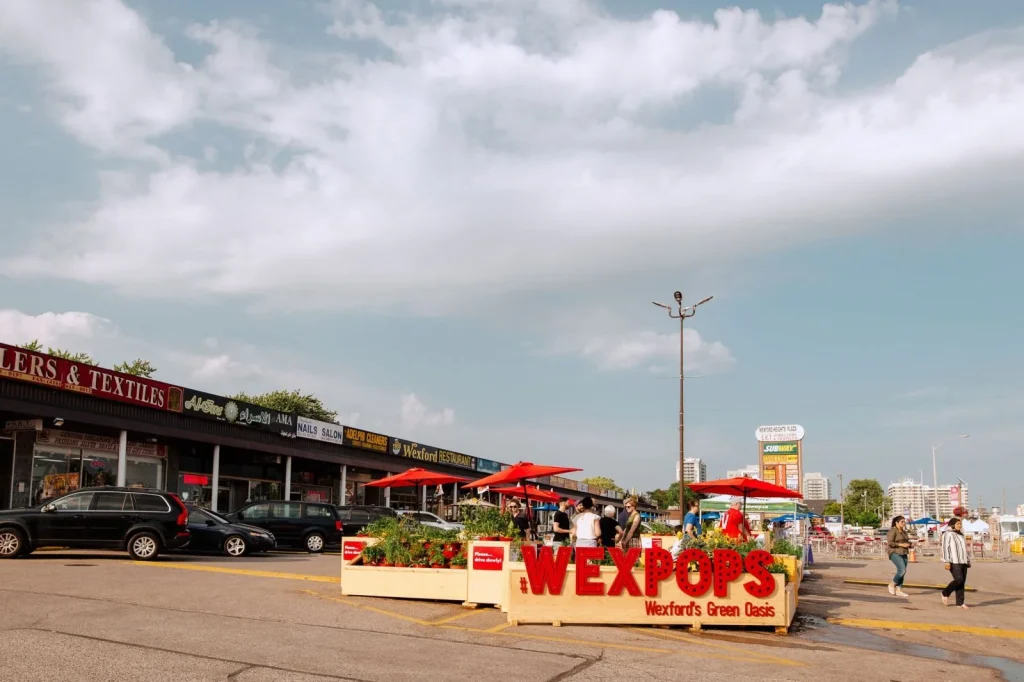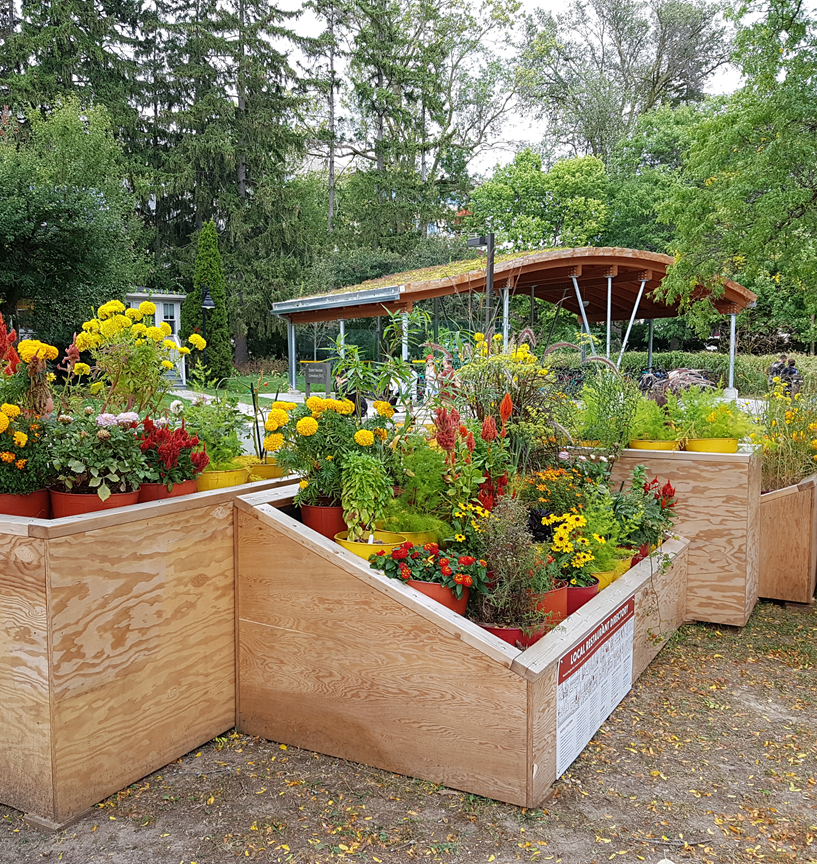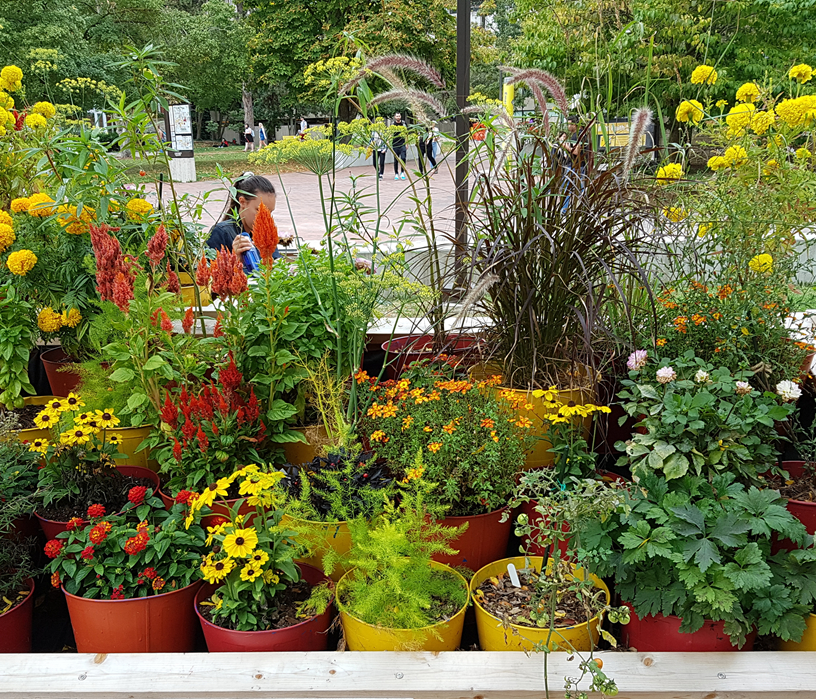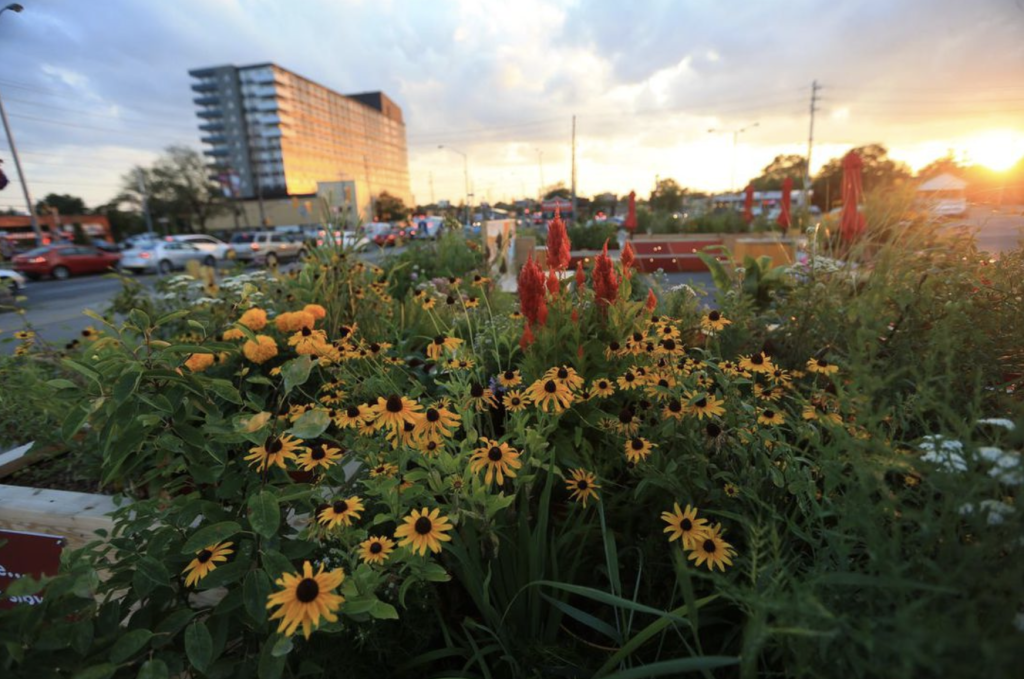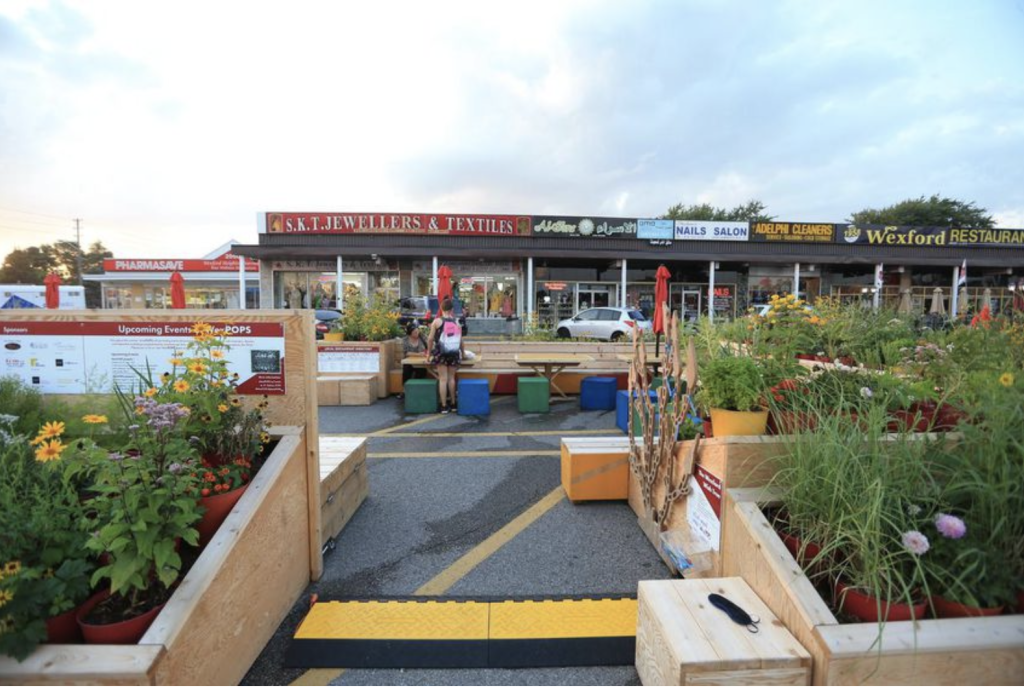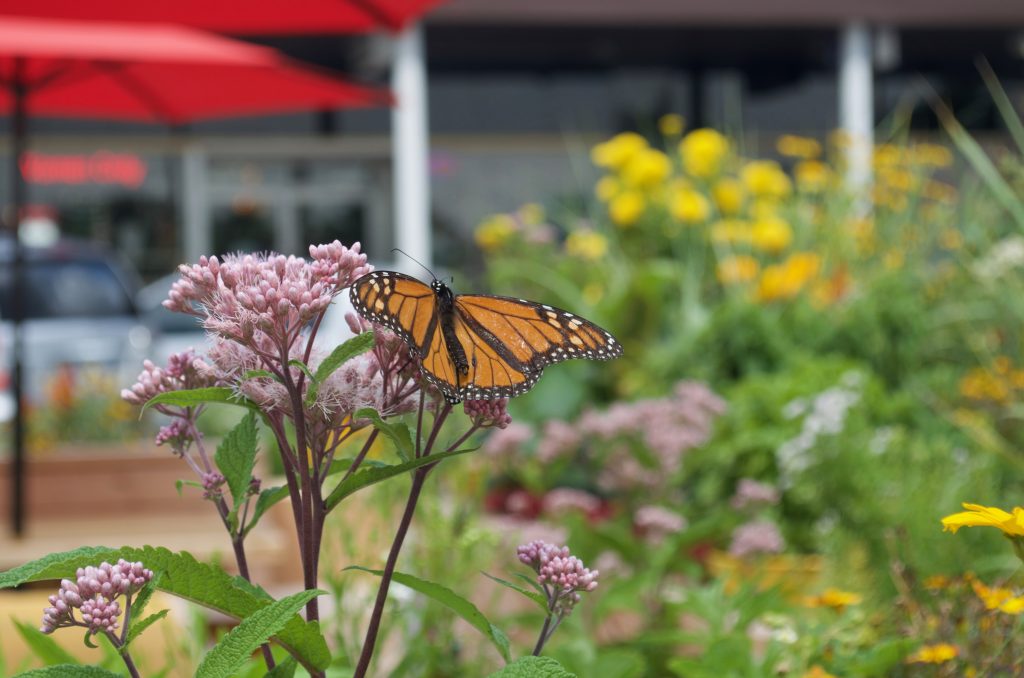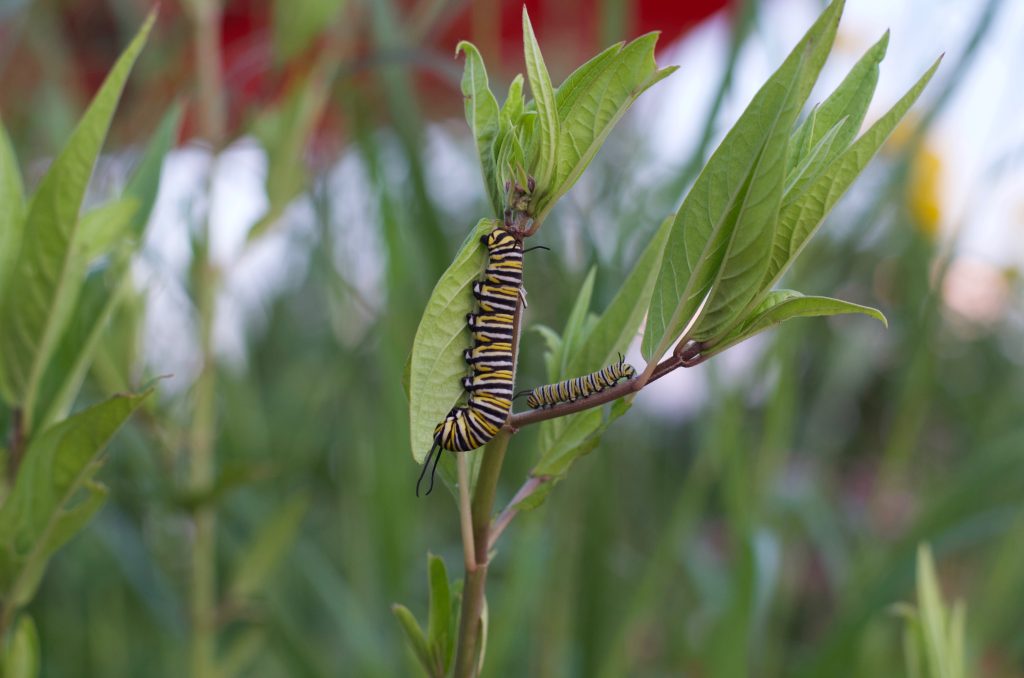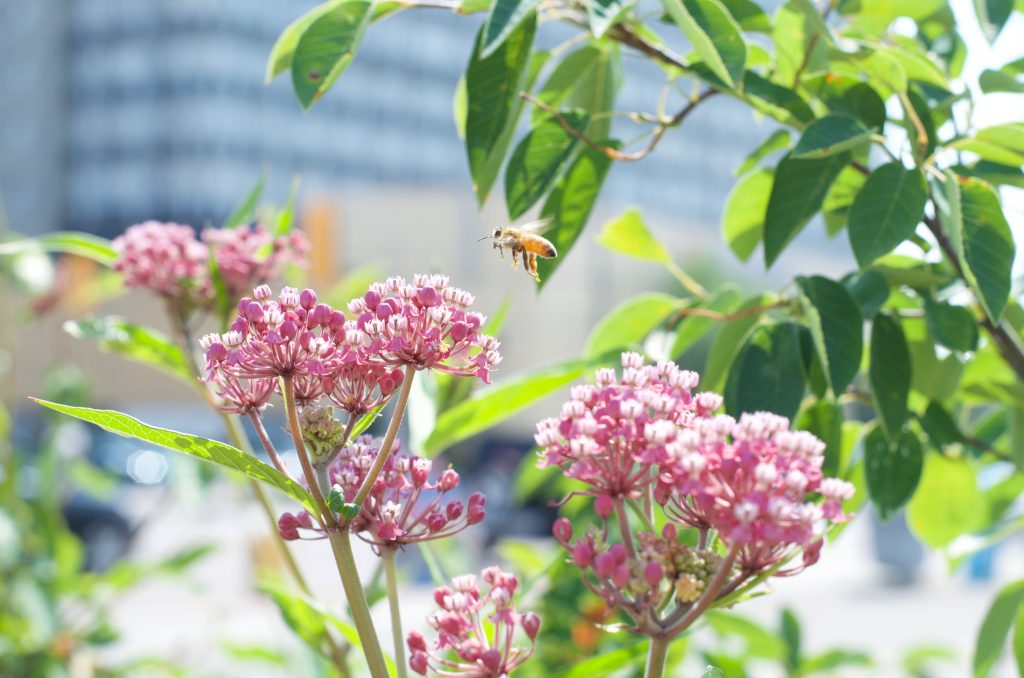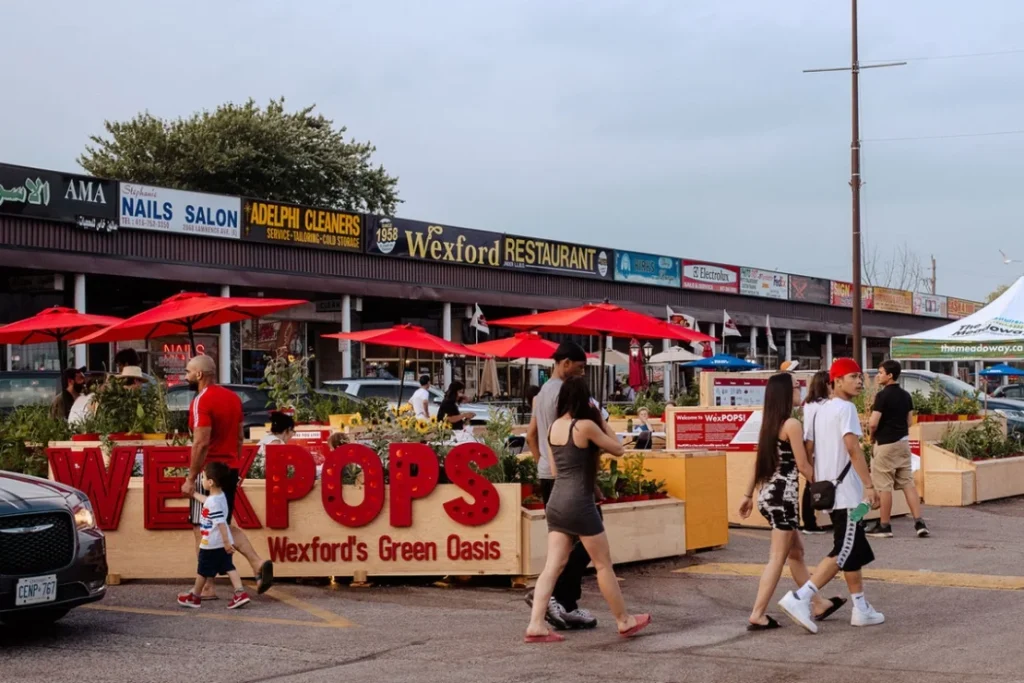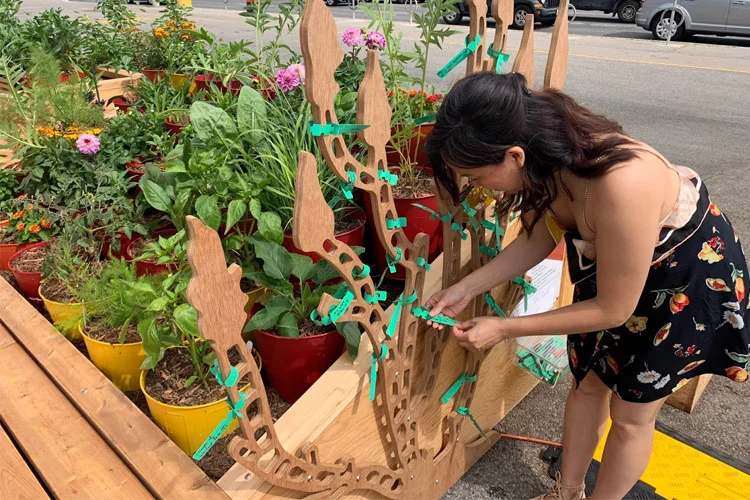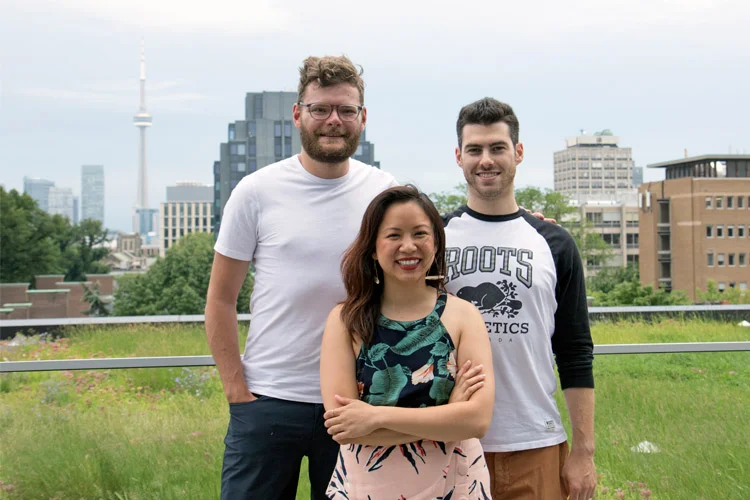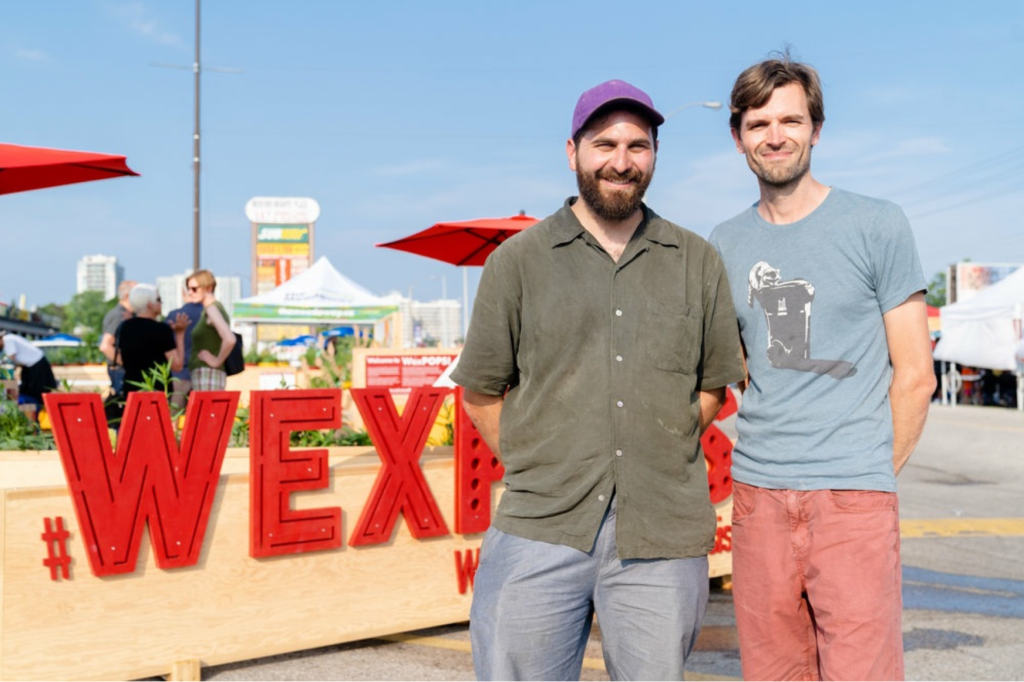By Jack Landau
Link to article
Congested suburban strip mall parking lots are the last place one would expect to encounter pockets of foot and cycling traffic, but for the past few years, some of these car-dominated pedestrian wastelands have been shedding that identity thanks to an ongoing initiative known as plazaPOPS.
The brainchild of Brendan Stewart and Karen Landman, who are both professors of Landscape Architecture at the University of Guelph, as well as author/cartographer Daniel Rotsztain, the project was spearheaded in a 2019 pilot transforming surface parking at Wexford Heights Plaza in Scarborough into an inviting pedestrian environment.
This first installation, known as WexPOPS, occupied just ten parking spots, but its success has created an appetite for even more community pop-ups in other suburban neighbourhoods across Toronto.
In the years since, plazaPOPS — named in a fusion of the strip plazas being transformed with privately-owned public spaces, or POPS — has taken its community-led, low-cost process to lots with an aim to create free and accessible spaces to address a lack of amenities for pedestrians and transit users.
This group of four parking lots spread throughout the Albion Islington Square BIA in North Etobicoke has been repurposed into community spaces until Oct. 24 in a partnership with the Rexdale Community Hub and local BIA.
It may run counter to trends of urban intensification, but pop-up spaces like these actually embrace the conditions of the inner suburbs. Instead of drastically changing the engrained way of life, they open up areas not necessarily designed with foot traffic in mind to new users while supporting businesses hard hit by two years of rolling lockdowns.
